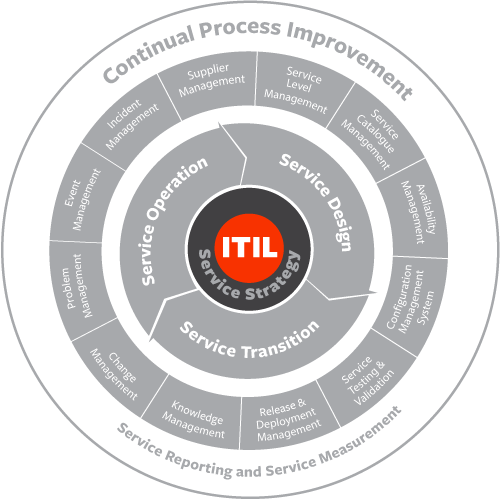ITIL discusses at length the four “Ps” of strategy- perspective, position, plan and pattern, each of which represents a different way to approach your service strategy and not to be confused with the 4 P’s of ITIL Service Design. Brief summaries are provided here and refer to Chapter 3 of the ITIL service strategy book for more details.

Download Now: ITIL 4 Best Practice e-Books
These all-new for 2020 ITIL e-books highlight important elements of ITIL 4 best practices. Quickly understand key changes and actionable concepts, written by ITIL 4 contributors.
- Perspective is your vision and direction for the services you will provide, and is attained through conversations with your stakeholders.
- Position is how you will differentiate from your competitors; that is, what is your unique value proposition? As sound position guides you in both what to do and what not to do based on your ability to differentiate yourself from the competition.
- Plan describes how you will achieve the established goals and objectives. It focuses on financial budgets, your portfolio of services, new service development, investments in service assets and improvement plans.
- Pattern represents consistent decisions and actions over time; that is, the organizations fundamental way of doing things. It is embedded in the way you do business. Management systems, organization, policies, processes, schedules and budgets all have discernable patterns. Patterns can be a source of competitive advantage.
The 4 Ps in Action
A well-known computer company’s perspective is building to customer specifications quickly and inexpensively. Its position is variety-based, initially delivering only laptops and desktops, with a wide variety of potential configurations. Key to the company’s plan(initially) is to take orders only via the Web and phone. And the pattern is a high level of customer service and competitive pricing.
Clear principles and guidelines, communicated through a well-define vision and mission statement, provide both the business and IT with a common goal. Keep a single minded focus on the customer perspective and the business outcomes that the customer desires, and adopt a continual service improvement approach so that you are constantly enhancing and differentiating the services you provide.
Keep reading: Check out our post on The 4 P’s of ITIL Service Design








